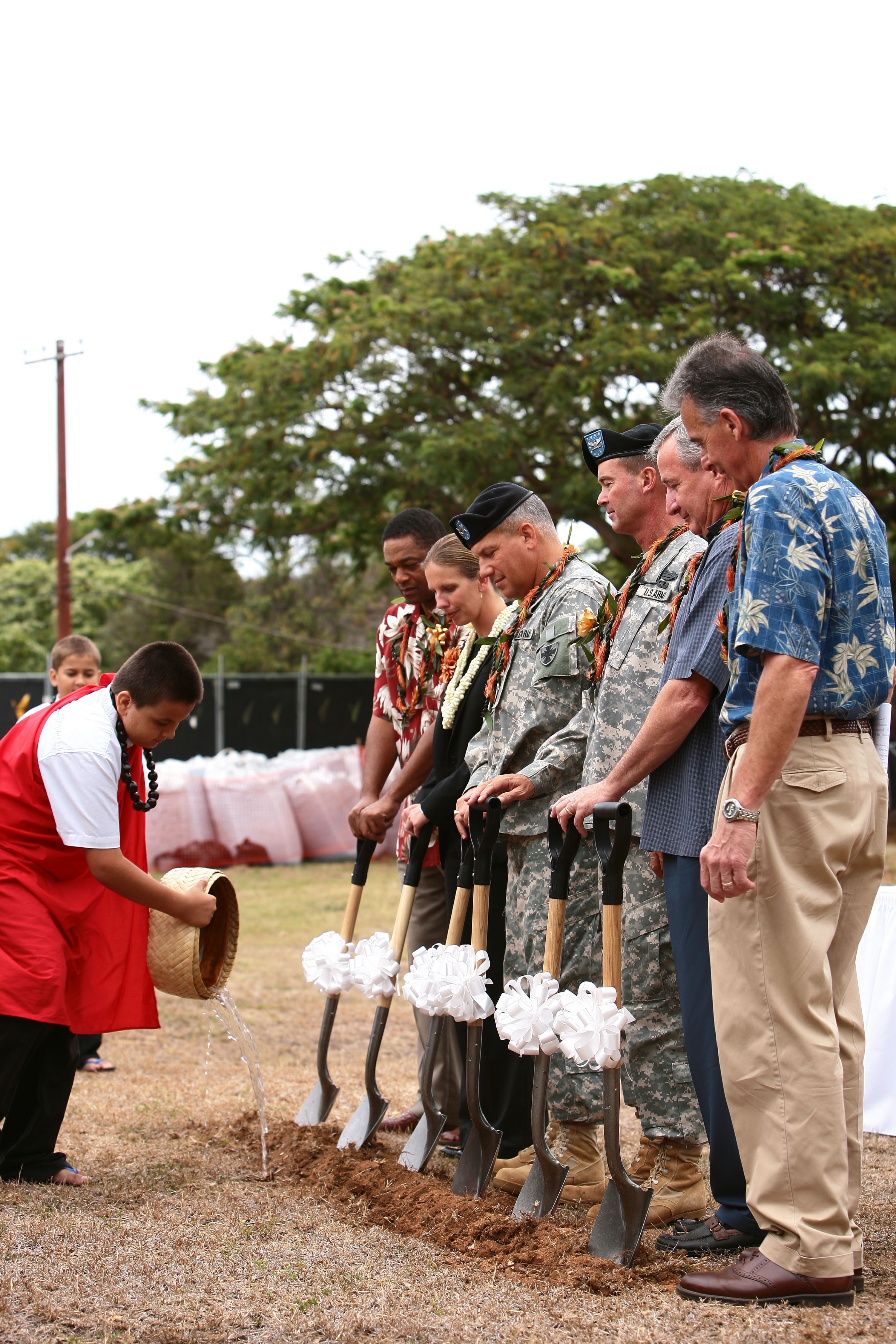<p><b><i>Actus Lend Lease, partners break ground on nation's first smart growth community for military families</b></i></p><p>SCHOFIELD BARRACKS, Hawaii - Army Hawaii Family Housing (AHFH) is one of an elite group of residential communities chosen to participate in the U.S. Green Building Council's (USGBC) Leadership in Energy and Environmental Design for Neighborhood Development (LEED-ND) pilot program. </p><p>With a groundbreaking that kicked off construction of the Simpson-Wisser neighborhood, June 17, the U.S. Army and development partner Actus Lend Lease are taking the lead in establishing and testing the first national standard for development of neighborhoods integrating smart growth, new urbanism and green building principles. The groundbreaking was attended by dignitaries representing the U.S. Army, the state of Hawaii, Actus Lend Lease and AHFH. </p><p> "As an Army family, we can't put enough emphasis on how important quality of life is for our Soldiers and their loved ones," said Col. Matthew Margotta, commander, U.S. Army Garrison-Hawaii. "What we're doing here, is breaking new ground, and, hopefully, setting a new precedent for Army housing will support the use of renewable resources and sustainable lifestyles for generations to come." </p><p> "We're very excited about this opportunity that could potentially change the world's view of residential community development," added Claire Ridding-Johnston, AHFH project director. "We are literally building the future at Army Hawaii." </p><p>The LEED-ND pilot program supports what is already going on in AHFH communities, which is developing neighborhoods that enrich the lives of Army families and ensure the respectful use of natural resources, according to Ridding-Johnston. </p><p>Rigorous standards must be met to achieve LEED-ND certification. Neighborhood design strategies must meet the highest levels of environmentally responsible and sustainable development, including density maintenance to reduce urban sprawl; energy efficient, pedestrian-oriented development; protection of threatened species and provisions for social well-being and healthy living. </p><p>Certification also includes specifications for home design and construction; all Simpson-Wisser homes will meet, or exceed, LEED-certified standards. </p><p> "The Army has never been shy about answering the call to duty, and more and more that duty demands that we broaden our outlook and really embrace sustainable business practices," Margotta said. "We're proud to be a part of these efforts and look forward to sharing our enthusiasm and successes with the community around us." </p><p>The future vision for Simpson-Wisser includes responsible replacement and recycling of all existing multifamily homes built in the late 1950s. In contrast to these existing homes, the LEED-ND homes will provide photovoltaic power generation, solar hot water and private open spaces, as well as larger dwellings, adequate off-street parking and significantly increased storage. </p><p>Neighborhood development at Simpson-Wisser will incorporate recreational amenities, community centers, walking and congregating areas designed specifically to strengthen the unique social fabric of military communities. </p><p>Following the event, guests enjoyed viewing exhibits showcasing Smart Growth urban plans and home design features, including building materials, household amenities, and new technologies being incorporated into the Simpson-Wisser LEED-ND pilot program. </p><p>The first new homes at Simpson-Wisser are expected to be completed in fall 2009.</p>
AHFH leads nation in smart growth
By Ann Wharton, Army Hawaii Family HousingJune 24, 2008


Social Sharing